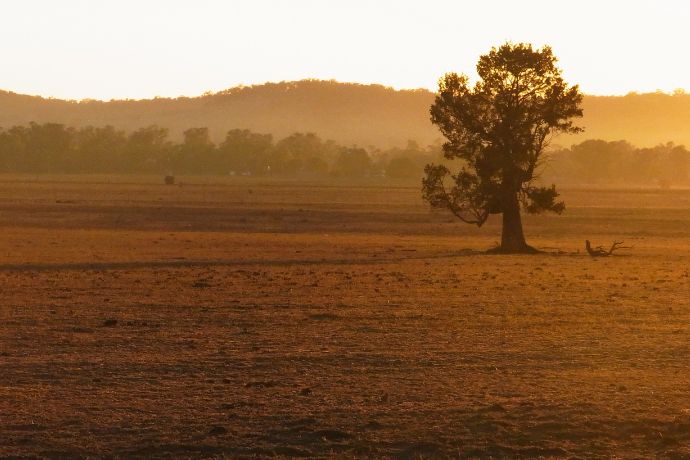Why we are at risk of flood-induced drought amnesia
The aftermath of the most widespread flooding in decades might seem like the last time to be talking about water scarcity, but the threat of drought is never far away in Australia.
The amount of rain NSW experienced in 2022, and the vast area affected by flooding, almost defies description. Astonishing, incredible, horrendous.
It began in March with ferocious floods in the northern rivers region and then continued raining until the sodden catchments of NSW could take no more. Major river systems like the Gwydir, Mehi, Namoi, Lachlan, Murrumbidgee, Murray, Darling and Macquarie produced (or threatened) further shocking flood disasters.
From the far northeast to the furthest southwest of the state, the floods took a tragic toll with life lost and great suffering. Property, crops, and roads were destroyed. Recovery from all these disasters will be long and difficult. The 2022 NSW floods are already estimated to be the costliest Australian natural disaster on record.
Of course, the rain brought at least relief and some hope of better times after some of the worst drought in recent history. Rivers that ran dry in the 2017-2020 drought are flowing again. Communities that ran out of town water now breathe easier. Abundant feed and water for agriculture have replaced bare paddocks, dry dams and dust storms. Internationally significant environmental sites like the Macquarie Marshes and Gwydir Wetlands are teeming with life again.
But the flooding rains have a way of making us forget about the certain reality that water is a finite resource and with the harsh realities of a changing climate, it is only a matter of time before it swings to dry again.
The CSIRO and Bureau of Meteorology have released their 2022 State of the Climate Report and there is no sugar coating, it’s a sobering prediction for water.
The report says average cool season rainfall in many parts of southern and eastern Australia will continue to fall, leading to more and longer droughts. Temperatures will continue to rise.
All this will be punctuated by more frequent extreme weather events - sometimes intense and damaging rain, sometimes extreme temperatures, sometimes dangerous fire weather days.
So, while we need to turn our minds to the immediate problems caused by too much water, we cannot allow that focus to develop into flood-induced drought amnesia. At times when water is abundant, we should be preparing for when it may not be in the near future.
We must ensure water is managed sustainably for the future of communities, businesses, and the environment.
For the Natural Resources Access Regulator (NRAR), that means remaining committed to monitoring compliance with the state's water laws, regardless of how wet the season has been.
There might be lots of water around, but water users must still know and follow the rules that apply to them. The rules are important all the time. Even when water is abundant, it needs to be accurately measured and accounted for.
When water seems plentiful, people can become complacent and bad habits can linger even when conditions start to dry.
NRAR's activities provide an opportunity to change mindsets and behaviours before they become a problem. A chance to remind people of their rights and responsibilities under NSW water law and assist them to comply. This is a great opportunity to prepare farms for the dry times.
Regular visits to water users across NSW combined with advice and support keeps the conversation going about the overall reality of water scarcity and helps to ensure there is adequate access to water for all users.
By remaining committed to enforcing water laws through the peaks and troughs of the seasons and the climate, we provide the potential to reduce the high cost of future water shortages by efficient and effective management of water in the present.
Natural Resources Access Regulator (NRAR) Director Regulatory Initiatives, Ian Bernard.
About Ian: Ian Bernard has worked in regulation and enforcement for over a decade, leading intelligence-led strategic programs that solve complex problems. He has played a pivotal role in leading the NRAR on the path to becoming a best practice regulator.
